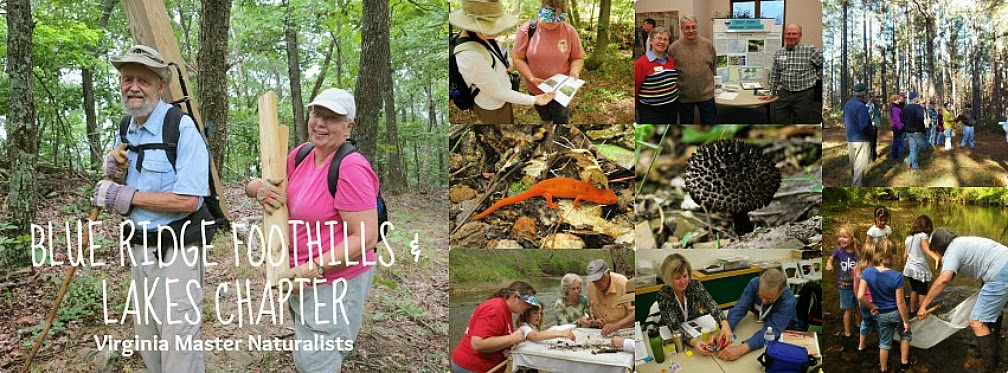 |
| Bracken Fern |
During a
recent wildflower hike in the Ivy Creek Natural Area outside Charlottesville
our group came across a common fern, likely the most prolific of the plants
that make up the division Pteridophyta.
It is found on every continent except Antarctica, and in every
environment except those desiccated from lack of rainfall. Imagine our surprise when our guide informed
us that this fern is now thought to be one of the most carcinogenic on earth! OK, so it’s not just mushrooms we have to be
wary of eating.
It’s
common name is Bracken Fern and is sometimes called “weed fern” because of its’
habit of choking out any other plants and forming a dense impenetrable
thatch. In Britain it is considered
invasive and steps have been taken to eradicate it because of its’ encroachment
on pasture land. The bracken has a very
successful “rhizome” structure. A rhizome is essentially a stem that grows horizontally
underground with upward extensions that form aerial shoots along the upper
surface and roots along the lower surface. The main rhizome of the bracken fern
can be several centimeters in diameter and can extend rapidly to expand the
network of the plant over a broad area.
A second reason for the dominance of
the bracken fern over its competitors is the chemical compounds excreted by the
plant that inhibit the growth of other plants.
Some of those chemicals are ptaquiloside, a lactone toxin that affects
the bone marrow and is probably carcinogenic, and cyanogenic glycosides that
yield hydrogen cyanide.
The newly emerging fronds of the
bracken fern, called “fiddleheads”, are commonly gathered in the spring and
eaten fresh. They are considered a
delicacy, particularly in Japan and Korea.
Bracken’s toxicity to grazing animals has long been known. The symptoms start with a condition known as
“bracken staggers” as the muscles degenerate. Untreated, death can result in
less than a fortnight; the antidote is daily injections of thiamine.
Bracken has played a significant
role in the culture of Western Civilization; it was used to pay the rent in the
middle ages as a measure of its value. Bracken fronds are highly absorbent due
to their high surface area and they additionally retain their fullness under
the weight of compaction. Harvested bracken ferns were accordingly used as
thatch for roofs, and, ironically given their overall toxicity, as livestock bedding.
Bracken rhizomes are noted for their ability to extract phosphorous and
potassium from the soil, accumulating stores of these minerals in their
extensive branching networks. Potash extracted from bracken was used in soap
making and in the manufacture of bleach through the mid 19th
Century. Bracken is currently under evaluation for use as a natural
fertilizer, taking advantage of its high levels of potash, and as a biofuel; it
has long been used to make especially hot fires.
Sources: British Journal of Cancer
Wikipedia
Sierra Club
BRFAL Chapter of Virginia Master Naturalist wants you to get outside, explore and learn something new today. Get involved in something cool, learn more about the Virginia Master Naturalist program here!


No comments:
Post a Comment
Thanks for your comment and interest! NOW GO OUTSIDE!